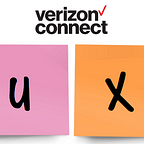We Have The Best Team
Last week, I was supporting a fellow researcher as they completed an in-depth interview with a user. In what has become common practice for VZC research, interviews are conducted in teams: one person moderates the interview, while another person listens in, takes notes, and provides follow-up questions. At the end of the interview, my coworker admitted that the session didn’t go as well as they had hoped. The participant was brief in their responses and it was hard to establish a conversational flow. We both had to put in considerable effort to craft questions on the fly that would provide insightful data. Because of this, my coworker was a bit defeated. “The imposter syndrome is real,” they admitted.
Ahh, imposter syndrome — that pesky psychological phenomenon that makes you feel inadequate and unqualified, as if you’ll be revealed as a fraud. These were the feelings my coworker was portraying: despite their experience, education, passion, and work performance, they didn’t feel like they “fit the mold” for a UX Researcher.
This encounter got me thinking: What is the mold for an “ideal UX Researcher”? What are the traits, skills, experiences, education, etc that make someone fit for the position? I used to think that the answer to that question was cut and dry. Prior to my internship with VZC, I had only a usability methods class and a few student-led UX projects under my belt. My perspective was admittedly narrow and naive. Here were some of my naive assumptions about what it meant to be a UX Researcher:
- A UX researcher comes from a cognition (or some other psychology-based) academic background. How can a researcher understand human users without the theoretical and methodological underpinnings of studying human thoughts, feelings, and behavior?
- A UX researcher has an advanced degree where they have learned the common techniques of the field.
- A UX researcher spends their day conducting usability tests, and not much else. They rely largely on qualitative data analysis, throwing advanced statistical techniques (that they may have spent years mastering) by the wayside.
These assumptions went out the window when I met the VZC research team. At first glance, the team seemed like a ragtag group of misfit nerds. Rather than having shared educational backgrounds, expertise varied from neuroscience to workplace ethnography to gender studies. Some had design experience, while others came from a largely academic background. Further, they were doing a huge variety of both qualitative and quantitative research — from traditional usability testing to foundational user needs analysis to usage data analytics. As it turned out, not a single person checked all the boxes for what I had imagined to be an ideal UX researcher… and yet — they were all doing some kickass research!
How is it that this group of nontraditional, not-quite-fitting-the-mold employees has established an unwavering research empire at VZC? The answer lies in this week’s sharmism: “We have the best team.” The team — the vast collection of knowledge, research methodologies, and analytical perspectives across team members — provides a variety in thinking that is ultimately a major advantage for the company.
As it turns out, there is more than one way to fit the mold of an ideal researcher. Or — perhaps the mold for an individual researcher doesn’t exist, replaced instead by a mold for the larger research team. Based on my experience with the VZC team, here is how I imagine that team mold would look like:
- Every team member has a common base: a desire to learn about humans. Each researcher should have the keen ability to ask questions, the passion to answer them, and the grit to advocate for their findings to the larger company.
- Each team member offers unique passions, backgrounds, and techniques — themes for which they become the resident expert. Even if it may not seem immediately relevant to UX, they find a way to use their expertise to improve the overall research program.
- Team members have a willingness to share their expertise with others on the team through collaboration and education. Further, they have a willingness to learn from other experts, and gladly accept new perspectives in their own work. They recognize that there are a lot of different ways to answer a given question (some of which they may not be aware of), and they ultimately want what’s best for the research itself.
The VZC Research team has seen growth and success following these principles. Team members have a smorgasbord of passions and perspectives — we bring a lot to the table! Through strong communication practices, we share our knowledge out to other researchers and other projects. We exhibit backup behavior, helping teammates out when they are in need (offering a supportive role during an interview, “Swarming” together to complete a larger task, or providing emotional support and validation when someone is facing speed-bumps in their work). And to tie it all together, we’ve got phenomenal leadership! Mayank and Cheryl work tirelessly to define shared research goals, facilitate adaptive changes in the team’s trajectory, and provide tactical, logistical, and emotional support to the team members. As Mayank always says, we really do have the best team. We may seem like imposters individually, but together, we fit the mold perfectly.
Written by Katie Lucaites
Katie is a PhD candidate at Clemson University, where she studies Human Factors Psychology. She was a UX Research Intern with our team in 2018 and 2019, where she helped develop foundational experimental lab projects for the VZC Research team. Katie specializes in visual perception, experimental research, and behavioral data analysis — each with an applied perspective. However, she loves a good old fashioned deep dive into just about any topic!
